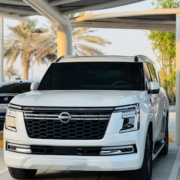Best 4 Cylinder SUVs in 2025 for Power, Space & Efficiency
SUVs have become a top choice for drivers seeking space, safety, and performance. However, not everyone needs a gas-guzzling V6 or V8 engine. In recent years, 4 cylinder SUVs have become increasingly popular due to their fuel efficiency, affordability, and surprisingly strong performance. In 2025, automotive manufacturers have introduced an impressive range of 4 cylinder SUVs that cater to different lifestyles—from daily commuting to adventurous off-roading. Here’s a look at the best 4 cylinder SUVs in 2025 and why they deserve your attention.
Why Choose a 4 Cylinder SUV?
A 4 cylinder engine offers a perfect middle ground. It delivers better fuel economy than larger engines while still providing enough power for highway driving, city commutes, and light towing. Thanks to turbocharging technology and hybrid integrations, today’s 4 cylinder engines are more capable than ever.
1. Toyota RAV4
The Toyota RAV4 continues to be a leader in the compact SUV segment. Powered by a 2.5-liter 4 cylinder engine, the 2025 RAV4 offers a smooth and responsive drive, perfect for urban use and weekend getaways. It also comes in hybrid and plug-in hybrid variants for added fuel savings.
Highlights:
- 203 horsepower
- Excellent reliability and resale value
- Standard Toyota Safety Sense 3.0
2. Honda CR-V
Honda’s CR-V is another top contender with its refined design and efficient engine. The 1.5-liter turbocharged 4 cylinder engine provides ample torque while ensuring great mileage. The interior is spacious, and the 2025 model includes enhanced infotainment and safety systems.
Highlights:
- Up to 34 mpg on the highway
- Class-leading cargo space
- Available hybrid model
3. Mazda CX-5
The Mazda CX-5 stands out for its premium interior and sporty handling. It comes with two 4 cylinder engine options, including a turbocharged version that delivers over 250 horsepower. Despite its upscale feel, it’s still priced competitively in the segment.
Highlights:
- Turbo engine available
- Luxurious cabin materials
- Top-rated safety features
4. Hyundai Tucson
Hyundai has made major strides in SUV innovation, and the 2025 Tucson reflects that. It offers a 2.5-liter 4 cylinder engine along with hybrid and plug-in hybrid options. The Tucson is also loaded with tech features, including a large touchscreen and digital gauges.
Highlights:
- Bold exterior design
- Multiple powertrain options
- SmartSense safety suite standard
5. Subaru Forester
The Forester remains a favorite among adventure seekers thanks to its standard all-wheel drive and rugged capabilities. Powered by a 2.5-liter 4 cylinder Boxer engine, it handles rough terrain with ease while maintaining great fuel efficiency.
Highlights:
- Standard AWD
- High ground clearance
- Spacious and practical interior
6. Ford Escape
The Ford Escape blends performance and versatility. The standard turbocharged 1.5-liter 4 cylinder engine offers a balanced driving experience, while the optional hybrid and plug-in hybrid variants boost fuel economy even further.
Highlights:
- Turbocharged efficiency
- Comfortable ride quality
- Ford Co-Pilot360 tech features
7. Chevrolet Equinox
Chevy’s Equinox is a practical and affordable SUV powered by a 1.5-liter turbocharged 4 cylinder engine. It provides ample space for passengers and cargo, making it a great family vehicle. The 2025 model features updated driver-assist features and improved infotainment.
Highlights:
- Fuel economy up to 31 mpg highway
- Quiet cabin and smooth ride
- Wi-Fi hotspot and touchscreen standard
8. Kia Sportage
The 2025 Kia Sportage is one of the most stylish SUVs in its segment. It offers a 2.5-liter 4 cylinder engine, plus hybrid and plug-in hybrid options. The Sportage has a spacious cabin, generous warranty, and an intuitive tech interface.
Highlights:
- Bold, futuristic design
- Best-in-class cargo space
- 10-year/100,000-mile powertrain warranty
9. Nissan Rogue
The Nissan Rogue has gained popularity for its value, comfort, and efficient 4 cylinder engine. The 1.5-liter VC-Turbo engine offers impressive performance without sacrificing fuel economy. The 2025 model includes updated styling and improved safety tech.
Highlights:
- 201-hp VC-Turbo engine
- Excellent fuel efficiency
- ProPILOT Assist semi-autonomous driving
10. Volkswagen Tiguan
Rounding out the list is the VW Tiguan, a European-inspired SUV with refined handling and a roomy third row (in some trims). Its 2.0-liter 4 cylinder turbo engine gives it plenty of power for everyday use, and the cabin feels upscale and tech-forward.
Highlights:
- Optional third-row seating
- Turbocharged punch
- Sleek European styling
What to Consider When Buying a 4 Cylinder SUV
Before choosing a 4 cylinder SUV, consider what matters most to you:
- Fuel Efficiency: If daily commuting is your main concern, go for models like the Honda CR-V or Toyota RAV4 Hybrid.
- Power & Performance: If you want extra power, choose turbocharged models like the Mazda CX-5 or Nissan Rogue.
- Space & Comfort: Families may prefer the Kia Sportage or Subaru Forester for their roomy interiors.
- Off-Road Capabilities: Adventure lovers should look for AWD models like the Forester or RAV4.
Final Thoughts
4 cylinder SUVs in 2025 prove that you don’t need a massive engine to enjoy performance, comfort, and utility. From city-friendly crossovers to rugged off-roaders, these vehicles offer a smart blend of efficiency and capability. Whether you’re a solo commuter, a couple, or a growing family, the best 4 cylinder SUVs offer everything you need—without breaking the bank at the pump.


